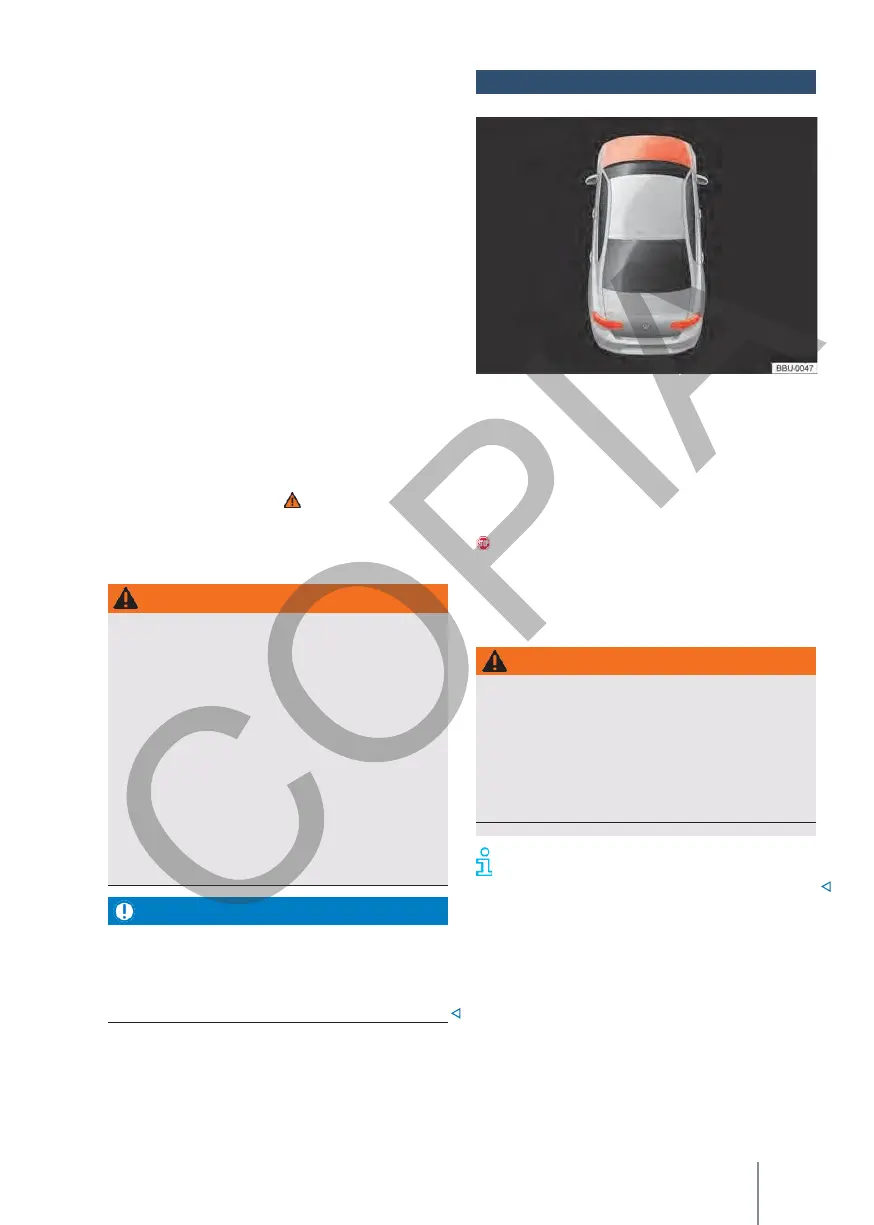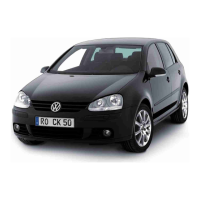Liquids and operating media
If the front bonnet is not closed properly, it may
open unexpectedly during a sea- ming and impede
forward visibility. This can lead to accidents and
serious injury.
•
After closing the front bonnet, make sure that
the lock is properly engaged in the lock
holder.
•
If, while driving, you find that the bonnet is not
closed properly, switch on the hazard warning
lights, stop the vehicle and turn off the engine.
The vehicle immediately and close the bonnet.
•
Open or close the front bonnet only when there
is no one in the area of the bonnet travel.
of the locking of the lock holder by spring force
→ page 243.
—
Lift the front bonnet slightly and at the same
time press the operating lever in the direction
of the arrow → Fig. 168 to open the bonnet
fully.
—
Remove the bonnet retaining rod from the
bonnet holder in the direction of the arrow →
Fig. 169 and insert it into the hole → Fig. 170.
Closing the front bonnet
—
Raise the front bonnet slightly and hold it in this
position.
—
Unhook the retaining rod from the hole.
→ fig. 169 and fit it into its holder → fig. 168.
—
Drop the bonnet into the locking catch from a
height of approx. 20 cm (8 inches).
Do not press it next!
If the front bonnet does not close properly, open it
again and close it again.
When the bonnet is closed properly, it is flush with
the adjacent body parts → .
The front bonnet is no longer highlighted in the
instrument cluster display → page 243 or the
display goes out.
Indication on the display
Fig. 171 On the instrument panel display: front
bonnet open or not closed correctly (schematic
representation).
If the front bonnet is open or not closed correctly, this
is indicated on the instrument panel display by a
symbolic representation
→ fig. 171.
Do not continue driving!
If necessary, raise
the front
bonnet again and close it again.
The display is also shown when the ignition is
switched off and goes out a few seconds after the
vehicle has been locked with the doors closed.
coughing.
The symbolic representation may vary
depending on the version of the instrument panel.
•
To prevent damage to the front bonnet and
wiper arms, open the bonnet only when the
wiper is switched off.
and its arms are over the windscreen.
Liquids and operating media
All fluids and operating media
, such as
engine coolant
or vehicle batteries, are subject to continuous
development. In the case of combustion engines, this
also applies to engine oils. Therefore, when changing
fluids, please contact a specialised workshop.
Ignoring the warning signs displayed may cause
the vehicle to stall in traffic and could lead to
accidents and serious injury.
•
Never ignore the warnings.
•
Stop the vehicle as soon as possible and be sure
that the vehicle is in a safe position.
guro.

